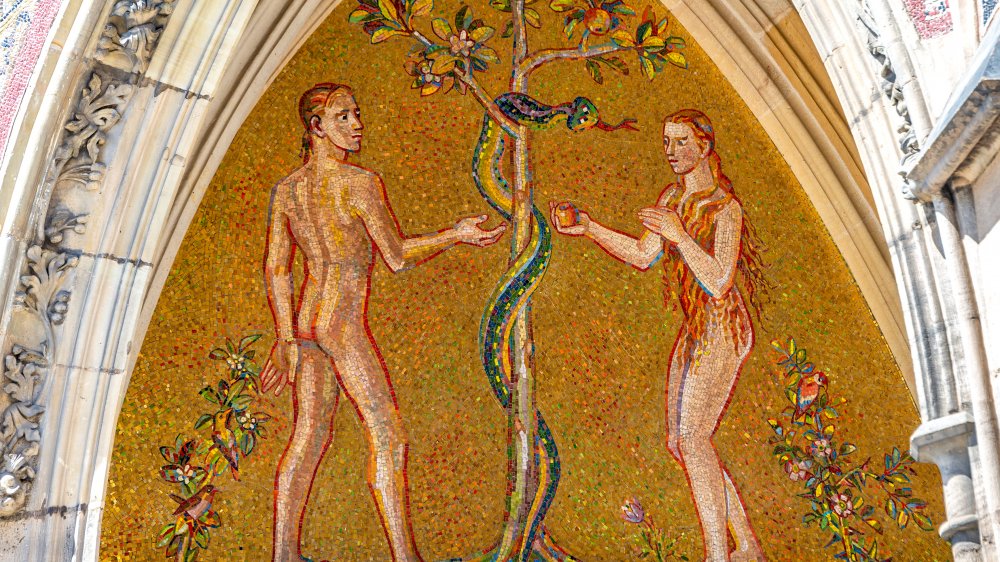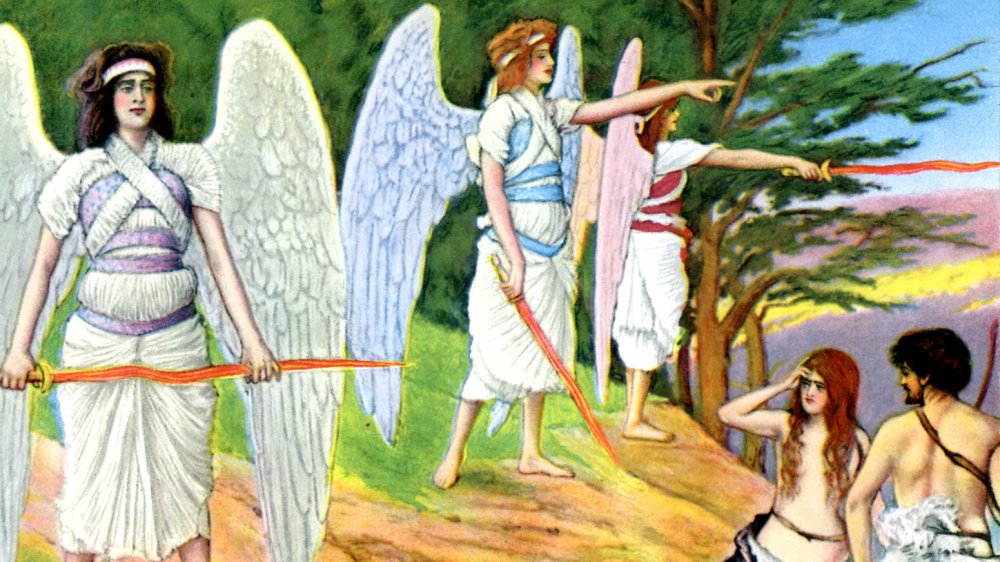There Are Actually Two Gardens Of Eden. Here's How
Reading the Bible, especially the Book of Genesis, one may be fascinated with the idea of the Garden of Eden. Adam and Eve first lived in the Garden of Eden, and it was here that the Tree of Life was located. The Garden of Eden supposedly had everything Adam and Eve needed to survive, and they were forbidden to leave. When God created Adam, he was placed within the Garden, or as the Ancient History Encyclopedia explained, "in the east side of Eden." It is painted as a luxurious place, luxury mainly referring more to food and foliage than to satin sheets, of course. But when the serpent tempted Eve to get fruit from the Tree of Knowledge, both Eve and Adam were cast out of paradise.
The Garden of Eden features heavily in both Christian and Jewish creation traditions. Though the idea of the Garden and Adam and Eve are mostly the same for both religions, they differ on how to interpret the garden, from its location to its composition. But what everyone agrees on is that when Adam and Eve were banished, it changed the world.
Most scholars agree that the Garden is mostly mythical, even as others are trying to figure out where it was located. Religious texts explain more about the Garden — for instance, that the Garden of Eden consisted of two gardens. According to the Jewish Encyclopedia, there were both a "higher" and a "lower" Garden.
The two gardens
As described by the Jewish Encyclopedia, Jewish texts said there were two gardens, one heavenly and the other earthly. The earthly garden, or lower Gan, is where Adam and Eve lived. The lower Gan is filled with lush vegetation, while the heavenly Eden, the higher garden, is where righteous, immortal souls live.
In this case, Eden is closely connected to the idea of heaven, a place where righteous souls go when they die. The Internet Sacred Texts Archive stated all souls of men must pass through the garden after death before they reach their final destination. Men must pass through a portal before being judged at the gates of paradise. Here they can find the Tree of Life and the Tree of Knowledge. The lower garden must be vast, because the Tree of Life is so huge that it takes 500 years for someone to walk around it. From beneath the Tree of Life emanate four rivers that irrigate the world: the Tigris, the Nile, the Euphrates, and the Ganges. Here, the plants survive only from rain. As it's paradise, Adam didn't need to work the land; everything was provided for him. If he wanted meat, the angels provided it. Even the earthly paradise felt like heaven.
The Ancient History Encyclopedia wrote it isn't technically correct to say Garden of Eden, but rather, it should be called the Garden in Eden, with Eden being an extraterrestrial or celestial place.
How they got back
During their stay in the Garden of Eden, God told both Adam and Eve they could eat any fruit or vegetation in paradise, except for one: the fruit from the Tree of Knowledge of Good and Evil. Eve fell for the serpent's temptation to pick the fruit, and both she and Adam ate the forbidden fruit. This leads to their expulsion from paradise. Both the man and the woman then had to start fending for themselves outside the walls of Gan and Eden, hunting to find food and needing to till their land. God placed cherubim as guards over the entrance to the Garden of Eden to prevent Adam and Eve's return.
Eventually, the couple have offspring, told in the story of Cain and Abel. Adam and Eve reached the age of 930, and Adam got sick. As he lay dying, and therefore bringing the concept of death to humanity, angels had petitioned to God to allow him back to paradise. And this is how humans managed to make their way back to the Garden of Eden. Adam died, and God allowed the Archangel Michael to bring Adam and Abel back.
That's a story many have heard, and now you know too that there are two levels to the garden. Now all that's left is figuring out where it is.


